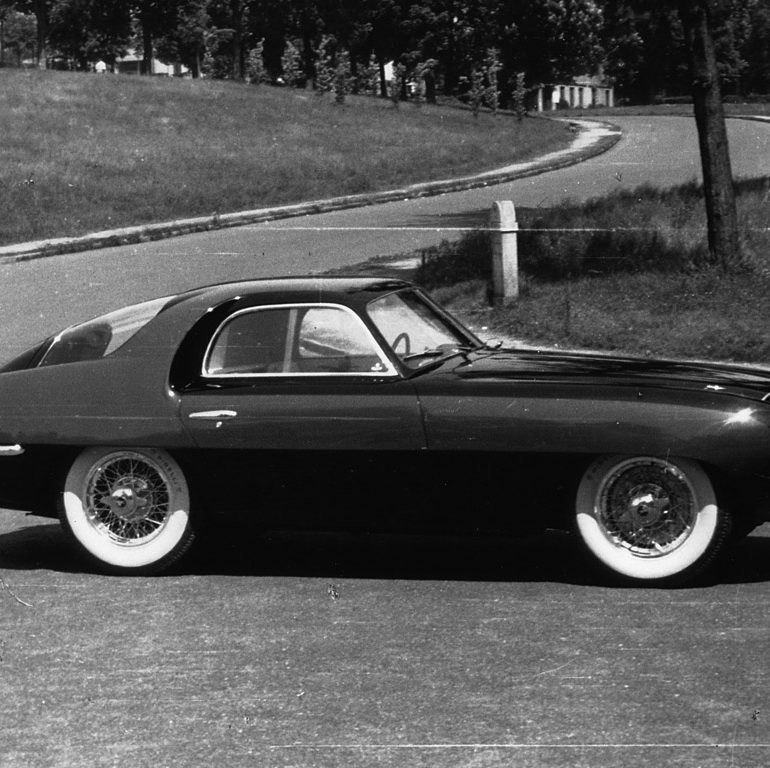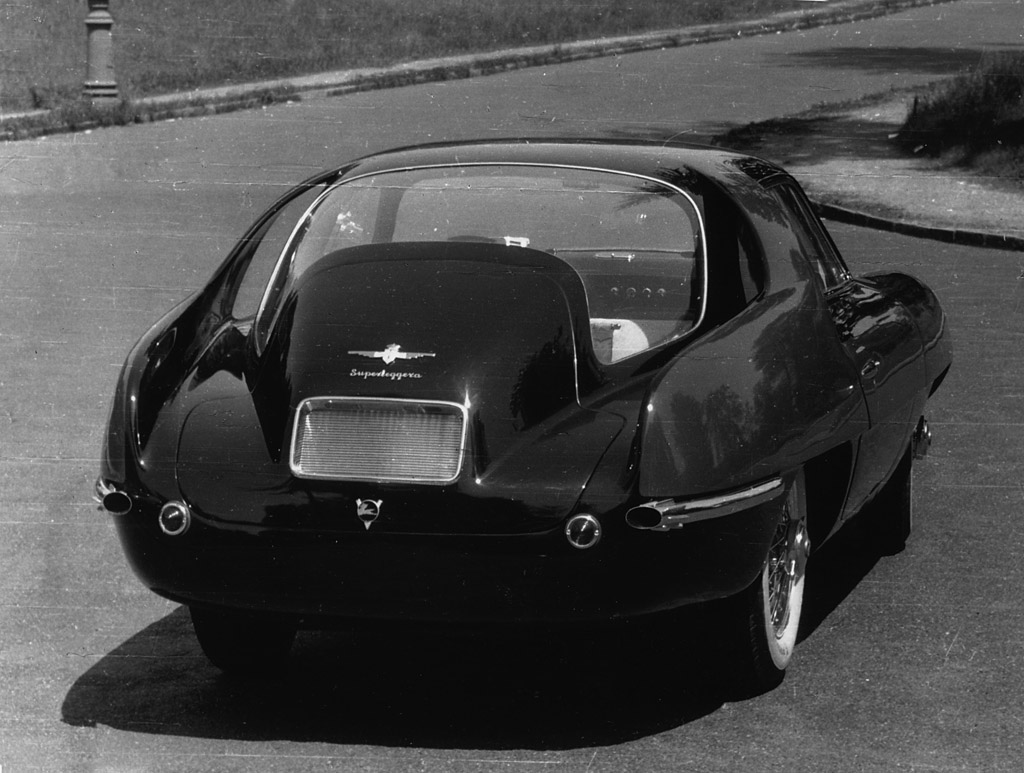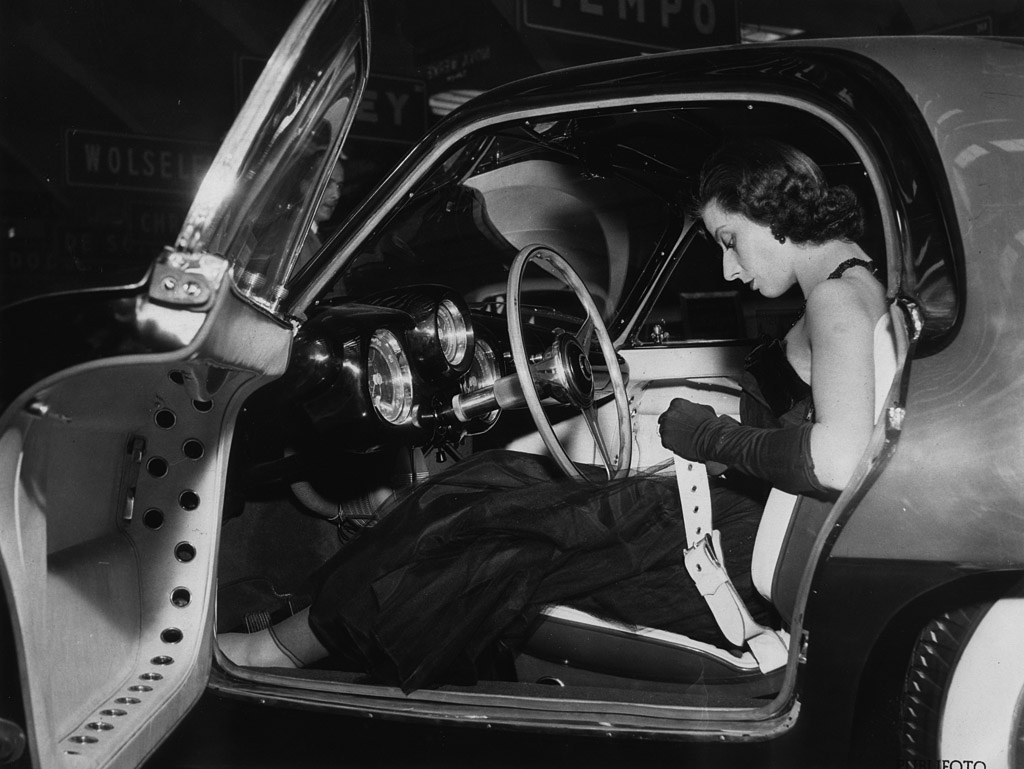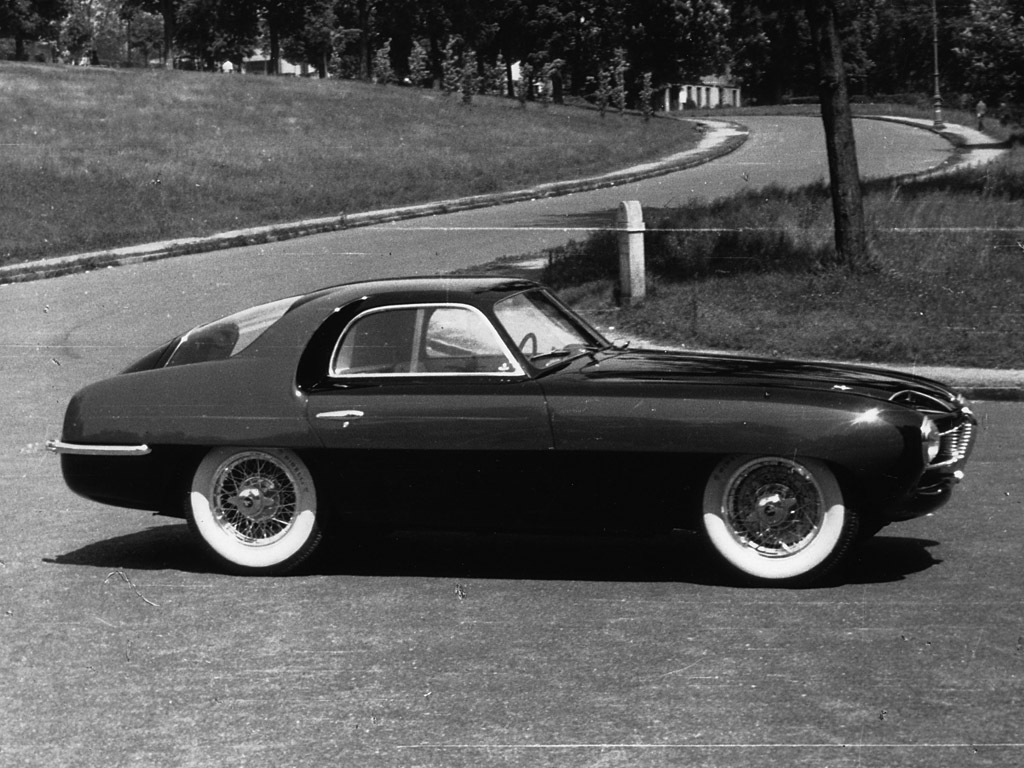1953 Pegaso Z-102 Thrill
Among all of Carrozzeria Touring’s post-war work, this sole Pegaso is one of their most thrilling. Being a one-of, it isn’t as prolific as the Aston DB4 nor Alfa Romeo 1900 which Touring also designed, but that allowed it to be much more daring than standard practice.
In 1951, Pegaso was building Spain’s only sports car on a steel tube frame, aluminum V8 engine and rear transaxle. Known as the Z-102, these were meant for the high-end market and attracted work from the Europe’s premier coachbuilders. They were also initially used for racing to a limited and unsuccessful degree.
Three years into production, Wilfredo P. Ricart approached Touring to make a new show car on the Z-102 chassis. He was a Spanish car designer and played a part in the final shape of the car. Knowing the kind of promotion this would bring, Carlo Felice at Touring gladly accepted the job. Pegaso’s mother company, Empresa Nacional de Autocamiones S.A., (ENASA) paid for the work. Like many extravagant Pegasos, the Thrill was planned for the Concours d’Elegance scene.
A cross-haired grill was the only visual cue that marked the Thrill as a Peagso. Touring styled a completely new body shape and interior that was fitting for the car’s name. The design used unfamiliar yet balanced lines and accentuated them with a high-contrast, red-on-black paint scheme.
From the outside, the most immediately noticeable trait is the car’s two flying buttresses that form the leading edge of the rear wings. These are a definite nod to America’a jet-age design, but the rounded edges make the Thrill appear less threatening.
The rest of the body is equally as interesting. Unlike many cars of the period which are slab sided, the Thrill has a crease line at the top of the wheel wells that divide off a thin sill from a wide belt line. The result is a top heavy appearance that makes the body look slightly overweight yet slim around its wheels.
At the rear, the body is swept inward. A rear deck houses the wrap around windscreen that is cutoff by a protruding trunk lid. This opens like a semi-hatchback into both the trunk and passenger area. Ample space is made for the two rear wings, as well as the Pegaso and Touring symbols which are featured prominently. Bumpers with integrated exhaust ports tuck away into the body’s main crease.
Inside, the car is similarly outfitted with an ornamental dashboard, two-tone upholstery, a huge wood-rimmed steering wheel and jewel-like gauges.
Despite all its extreme characteristics, the Thrill still maintains cohesiveness and grace. It also shows how far stylists had come in 1953 by moving away from designs that were obviously only styled in two dimensions. Even though it was a small sports car, this hallmark car helped other stylists take a radical 3D approach to design such as Bertone and his BAT project.
Upon completion in 1953, the public first got a glimpse of the Thrill on the show circuit. That year it visited Turin, Barcelona, Paris and London promoting both Pegaso and Touring. It also won the ‘Grand Premio d’Onore’ at the 1953 Concours d’Elegance at Stresa. Later, the Thrill’s production version was released with a lack of buttresses and crease line. Many coupes and convertibles were made this way.
It was rumored that General Francisco Franco gifted the car Evita Peron the Prime Minister of Argentina’s wife.
After decades of ownership in its orginal colors, the Thrill turned up at a Chrities auction missing many parts. It was bought by Raffi Minasian who said that the car’s heavy steering, suspension, terrible shocks and braking kept him from driving it fast. By the early nineties, Minasian and his father decided to finally restore the car for the Pegaso meeting at Pebble Beach in 1994. It was used as a cover car and placed beside 11 other striking examples at the show. Afterwards, the car was sold to a private collection in Belgium. It has since come out twice, once at the 2000 Dutch Concours and a second time at the 2008 Villa d’Este Concours to celebrate the revival of Touring Superleggra.
Story by Richard Owen
In Detail
| submitted by | Richard Owen |
| type | Series Production Car |
| released at | 1953 Turin Motorshow |
| body stylist | Carlo Felice Anderloni |
| coachbuilder | Touring |
| production | 1 |
| engine | 90° V8 w/Dry Sump Lubrication |
| position | Front Longitudinal |
| aspiration | Natural |
| block material | Aluminum Alloy |
| valvetrain | Chain-Driven DOHC, 2 Valves per Cyl |
| fuel feed | 4 Weber 36 DCF3 Carburetors |
| displacement | 2816 cc / 171.84 in³ |
| bore | 80 mm / 3.1 in |
| stroke | 70 mm / 2.8 in |
| power | 130.5 kw / 175 bhp @ 6300 rpm |
| specific output | 62.14 bhp per litre |
| bhp/weight | 137.8 bhp per tonne |
| torque | 216.9 nm / 160 ft lbs @ 3600 rpm |
| body / frame | Aluminum over Steel Frame |
| front brakes | Al-fin Drums |
| rear brakes | Al-fin Drums |
| steering | Worm & Nut |
| f suspension | Wishbones w/Torsion Bars |
| r suspension | DeDion-Type Axle w/Radius Rods |
| curb weight | 1270 kg / 2800.35 lbs |
| wheelbase | 2340 mm / 92.1 in |
| front track | 1320 mm / 52.0 in |
| rear track | 1290 mm / 50.8 in |
| transmission | 5-Speed Manual Transaxle |
| top speed | ~225.26 kph / 140 mph |
| 0 – 60 mph | ~8.5 seconds |







